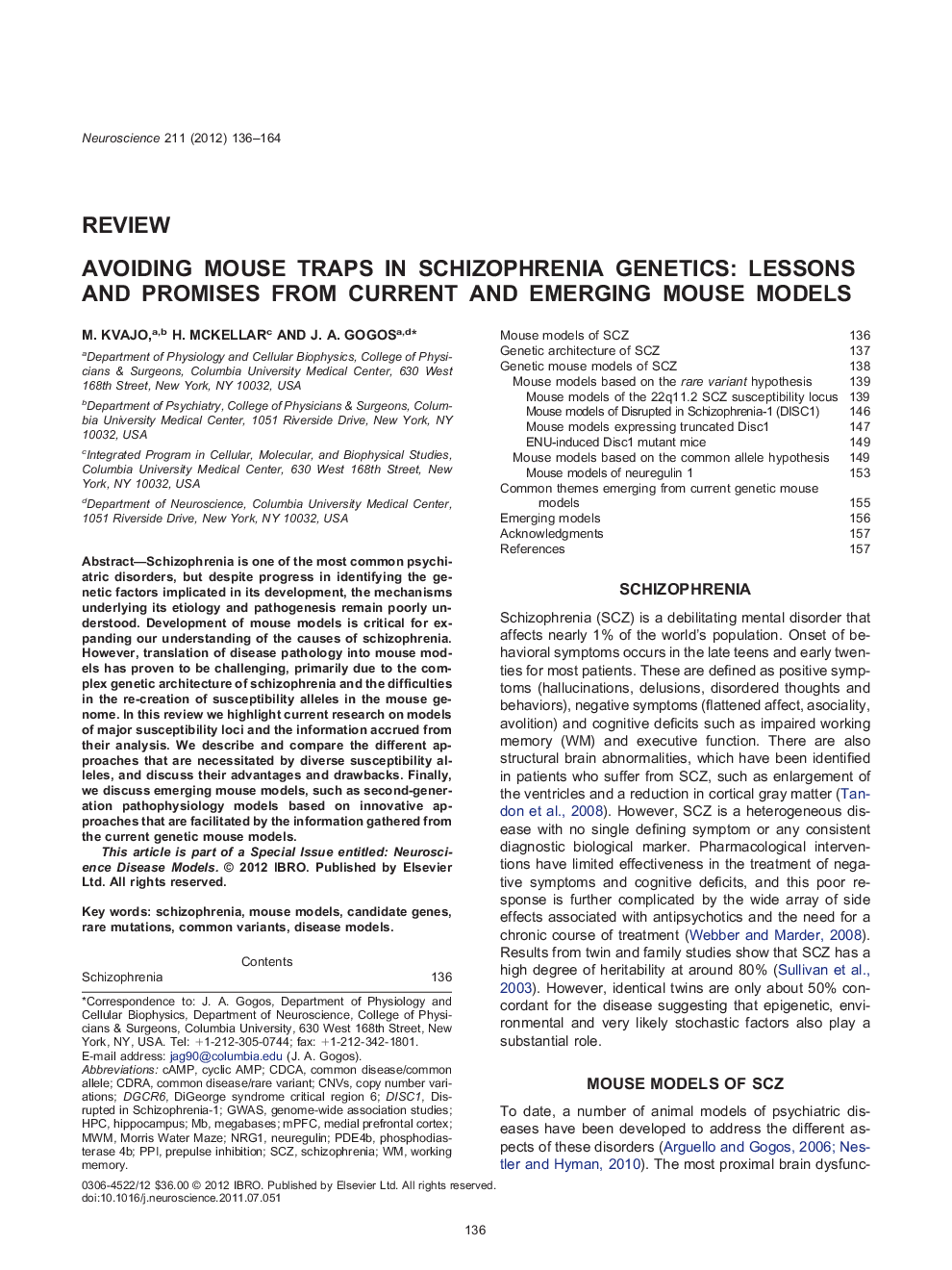| کد مقاله | کد نشریه | سال انتشار | مقاله انگلیسی | نسخه تمام متن |
|---|---|---|---|---|
| 4338421 | 1614865 | 2012 | 29 صفحه PDF | دانلود رایگان |

Schizophrenia is one of the most common psychiatric disorders, but despite progress in identifying the genetic factors implicated in its development, the mechanisms underlying its etiology and pathogenesis remain poorly understood. Development of mouse models is critical for expanding our understanding of the causes of schizophrenia. However, translation of disease pathology into mouse models has proven to be challenging, primarily due to the complex genetic architecture of schizophrenia and the difficulties in the re-creation of susceptibility alleles in the mouse genome. In this review we highlight current research on models of major susceptibility loci and the information accrued from their analysis. We describe and compare the different approaches that are necessitated by diverse susceptibility alleles, and discuss their advantages and drawbacks. Finally, we discuss emerging mouse models, such as second-generation pathophysiology models based on innovative approaches that are facilitated by the information gathered from the current genetic mouse models.This article is part of a Special Issue entitled: Neuroscience Disease Models.
▶We review the progress in the development of mouse models of schizophrenia. ▶Current models of susceptibility genes are described and their advantages and disadvantages are discussed. ▶We describe emerging mouse models which are based on novel findings and technologies.
Journal: Neuroscience - Volume 211, 1 June 2012, Pages 136–164